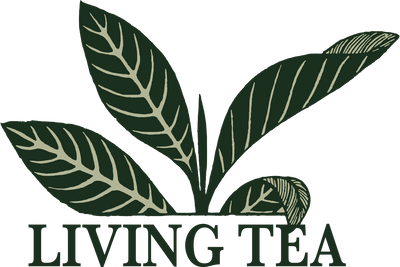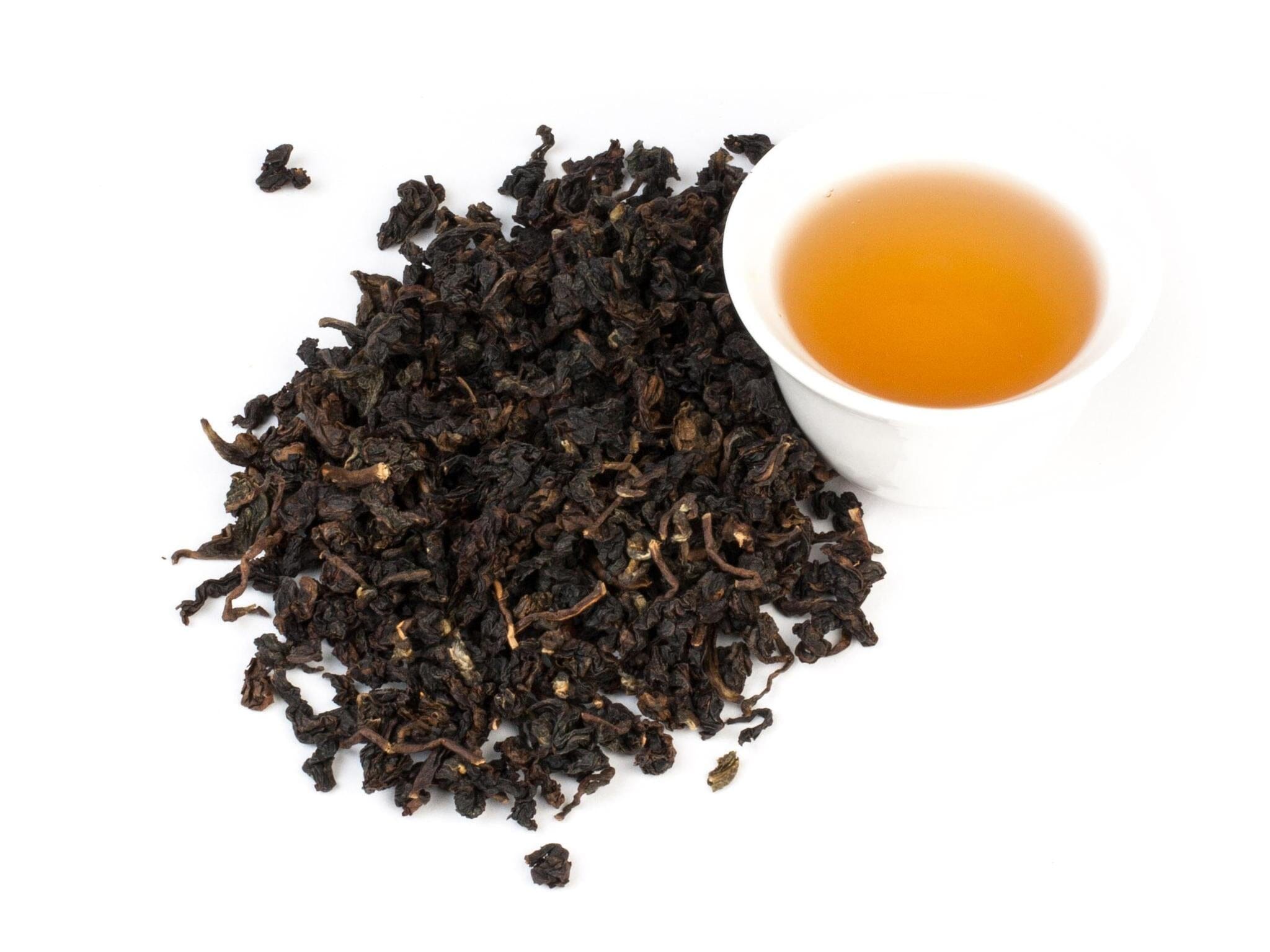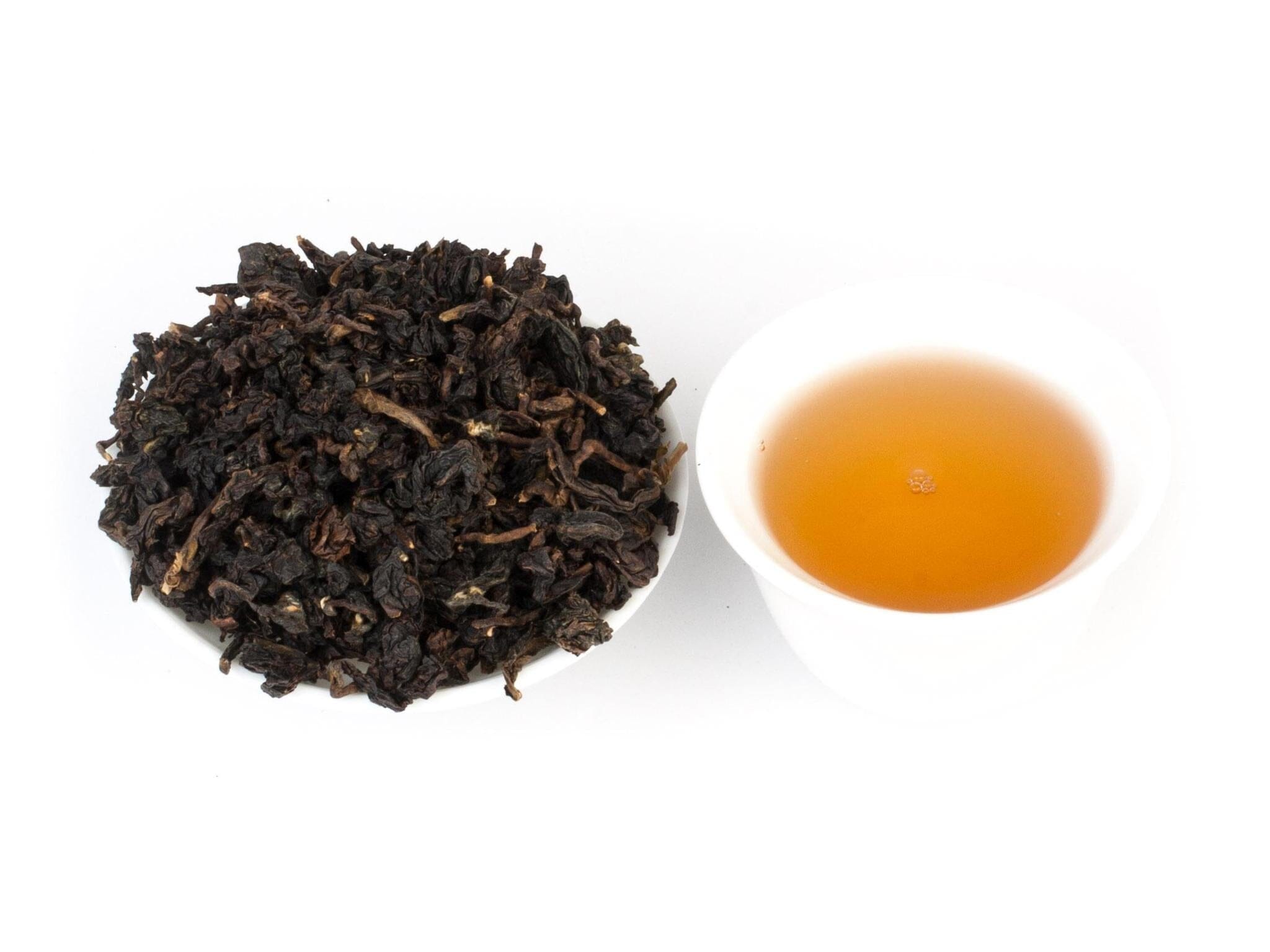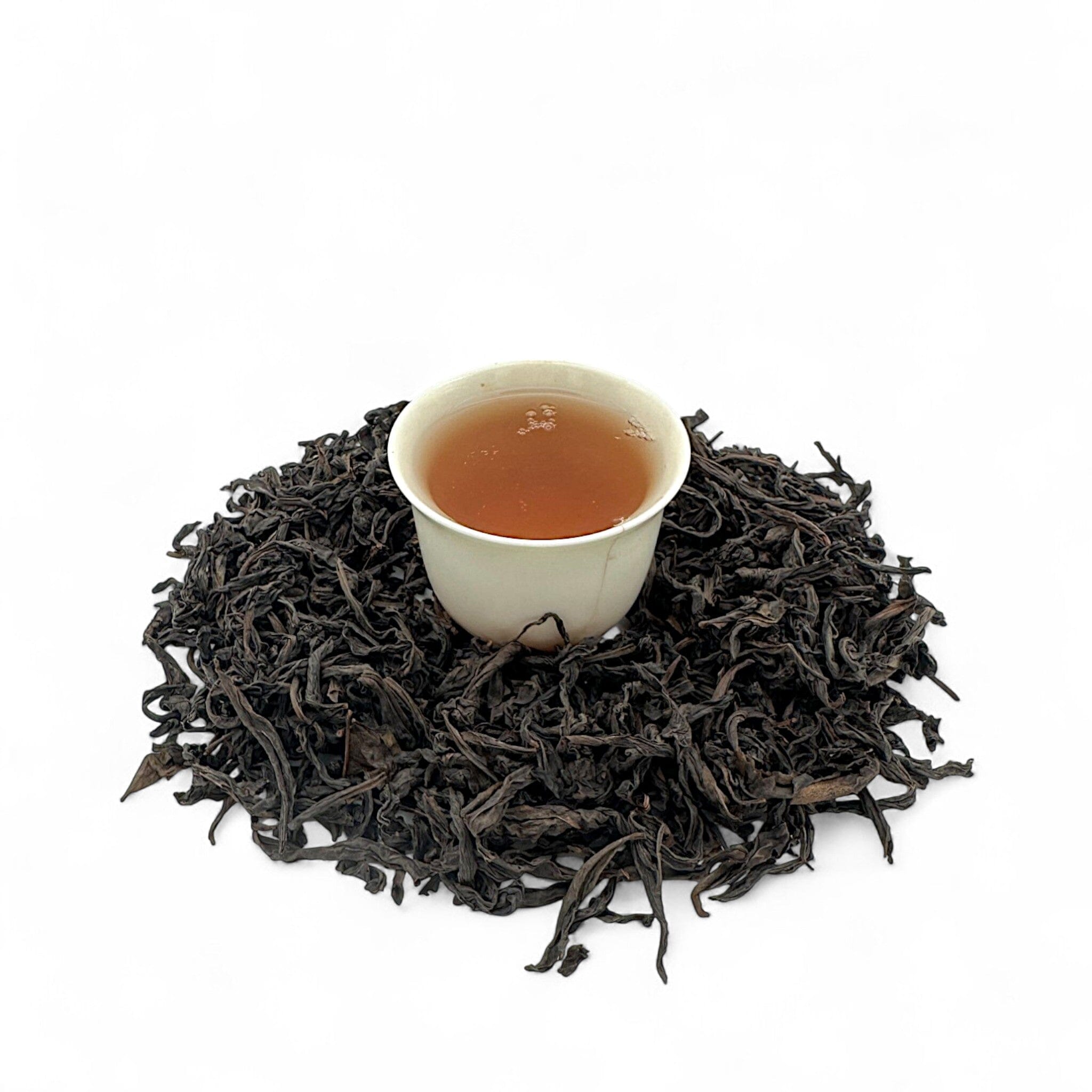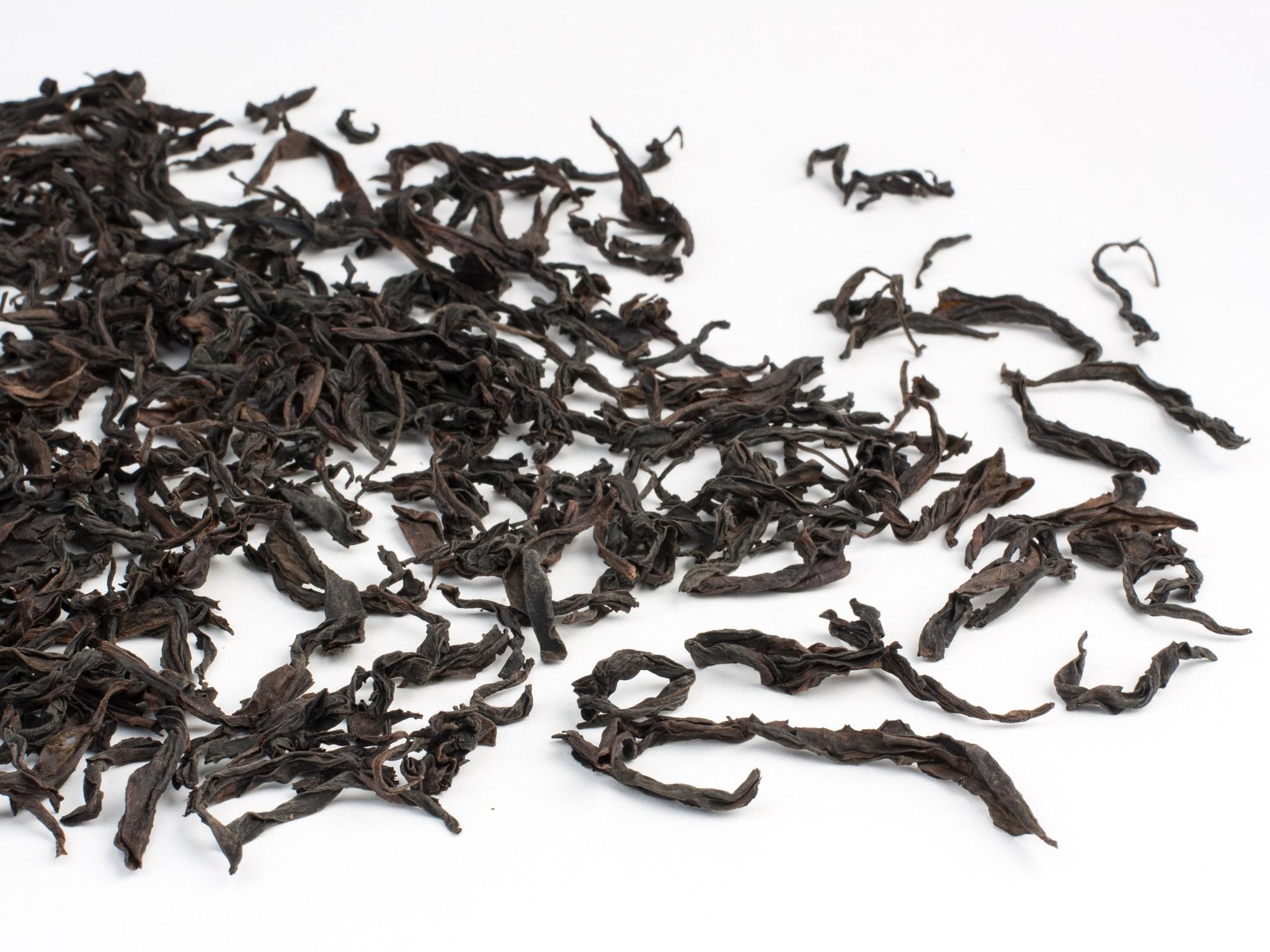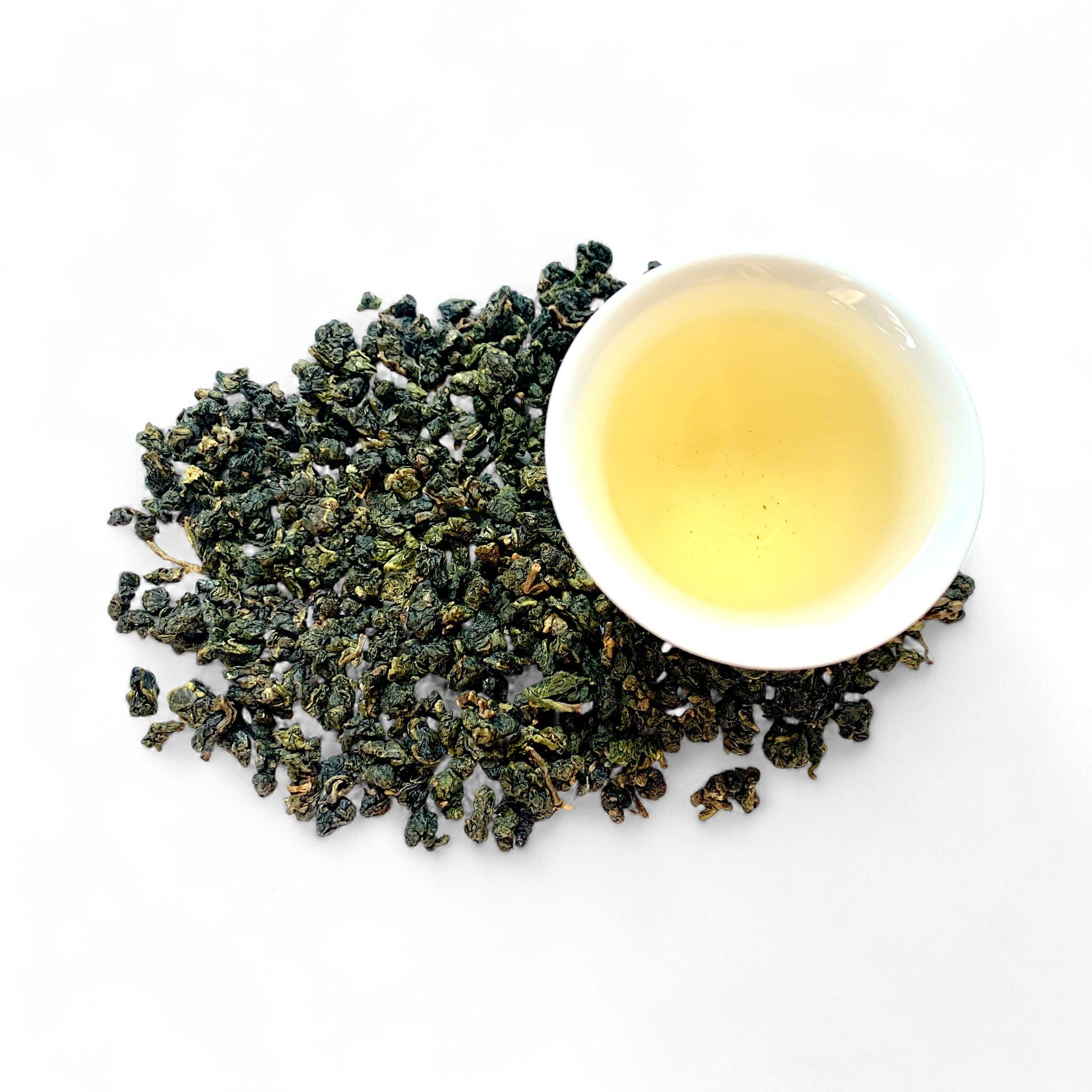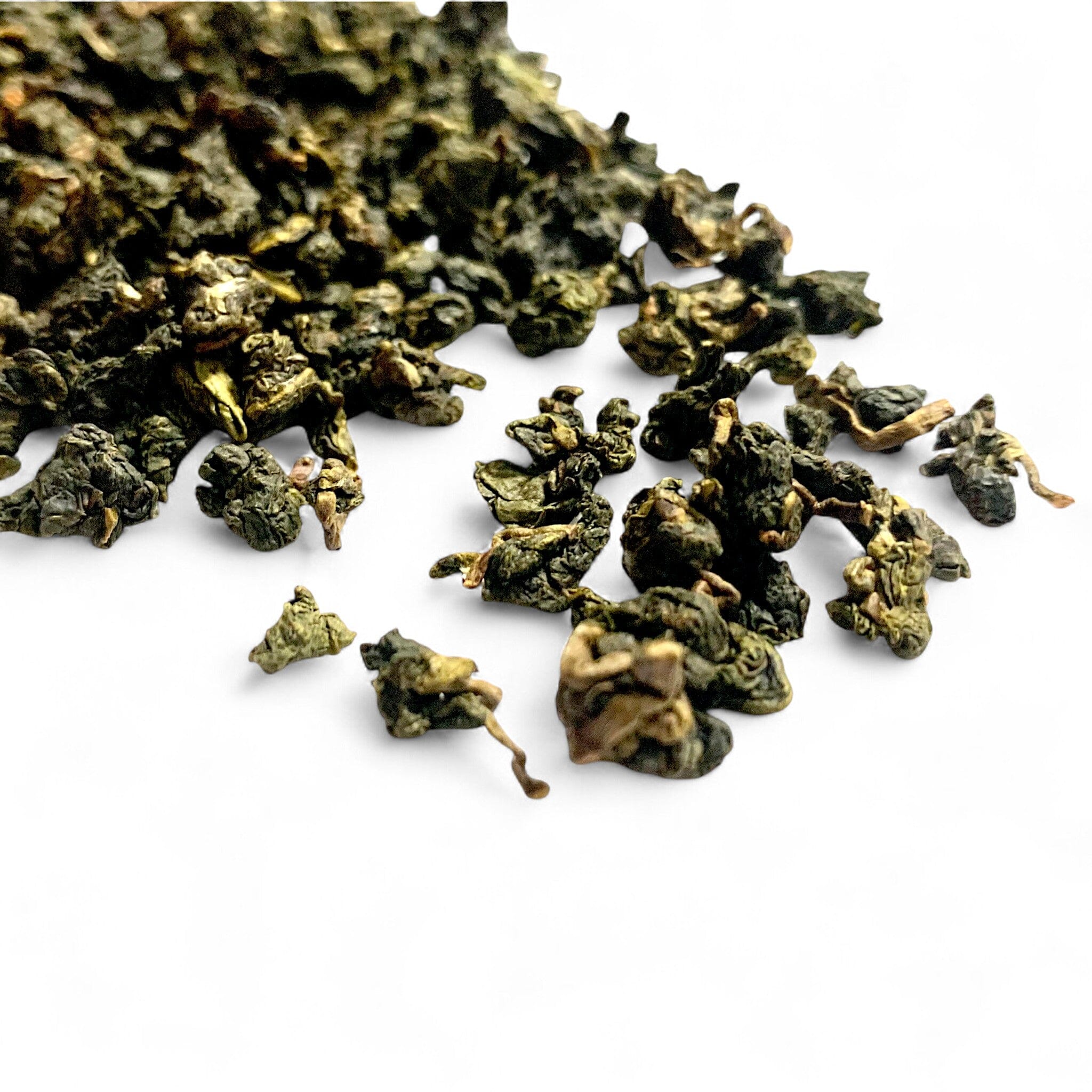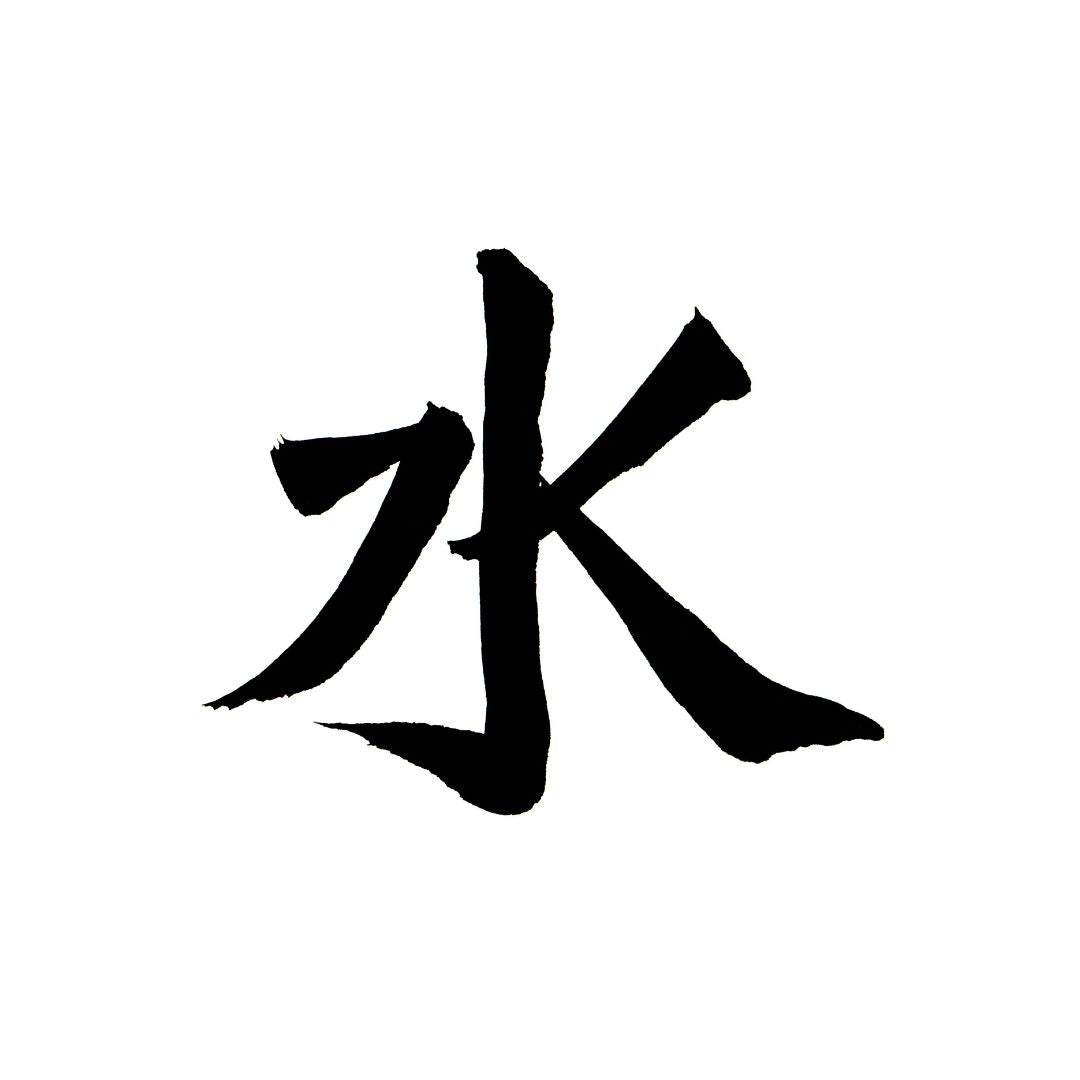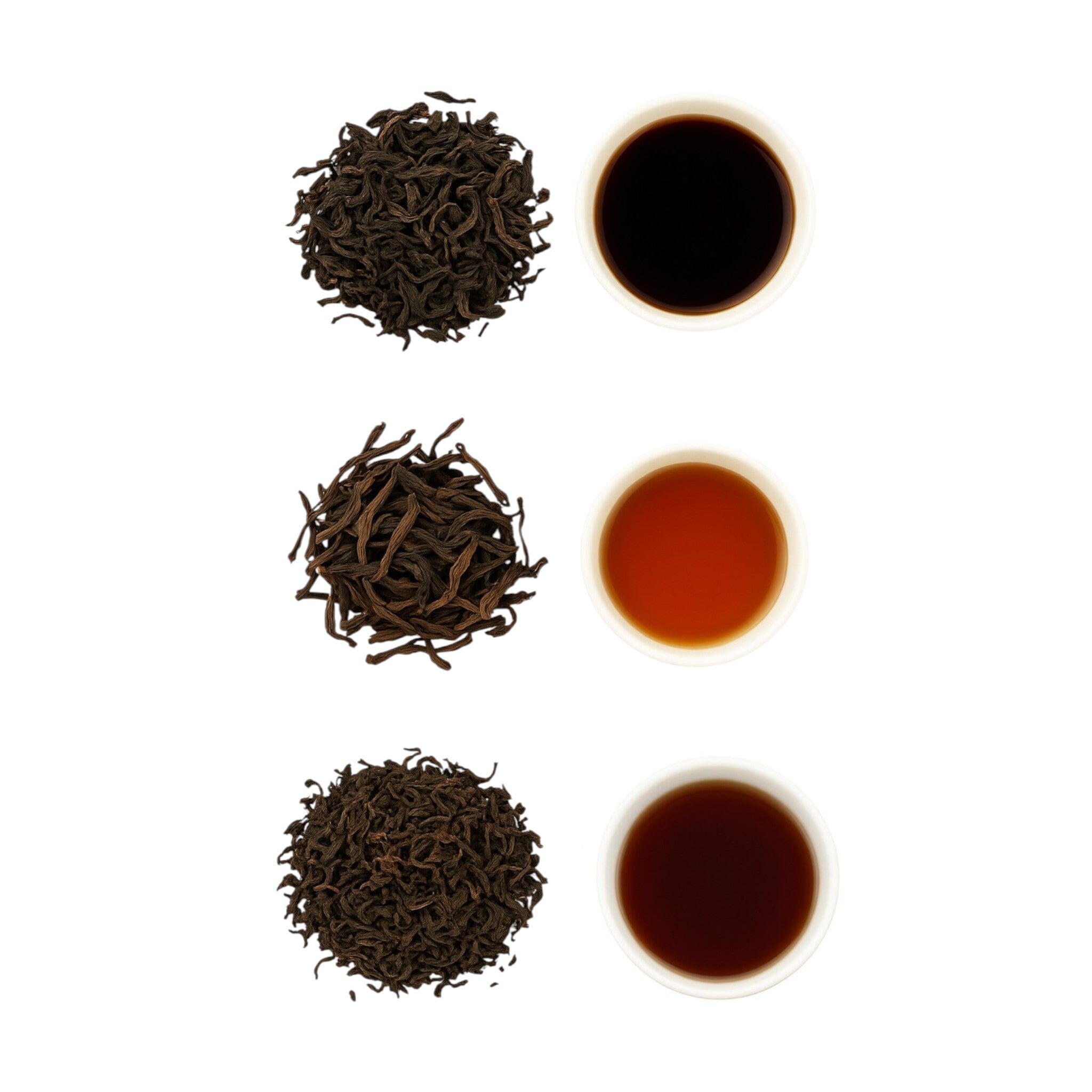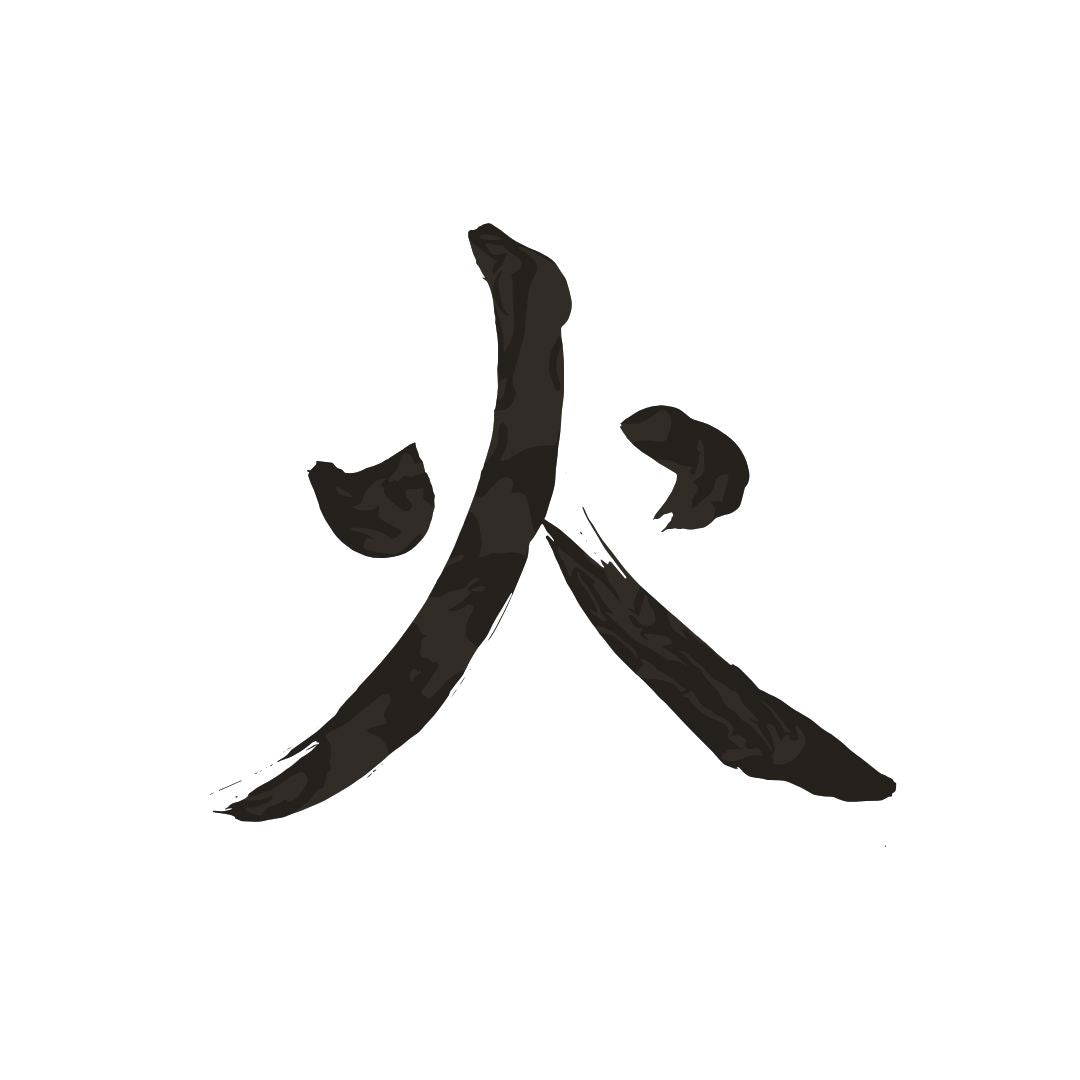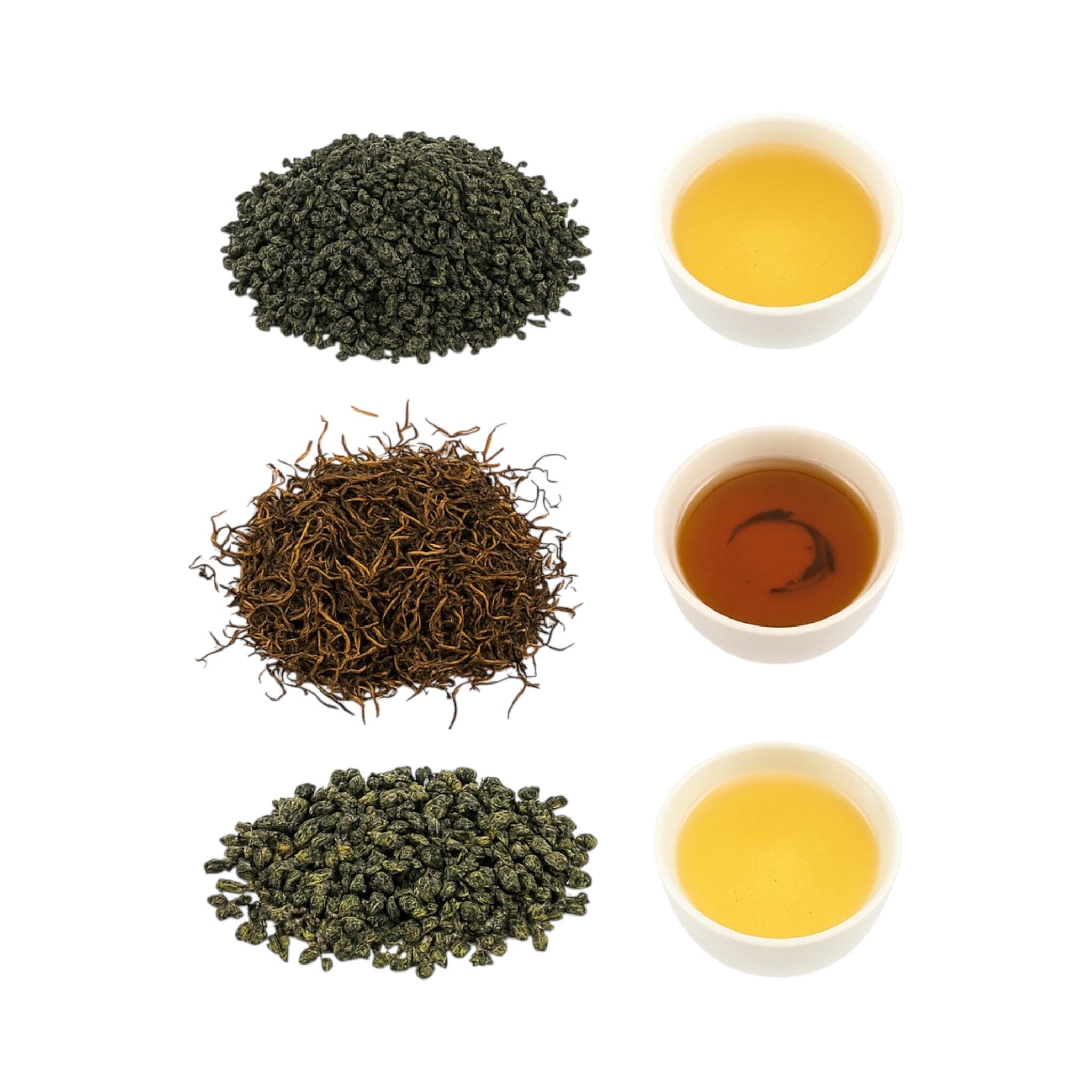Oolong Tea
Oolong tea is only partially oxidized or semi-oxidized.
Oolong teas are highly aromatic teas with flavor profiles ranging from robust and roasted to light and floral.
Oolong tea, a traditional Chinese tea with an aromatic, floral flavor profile, is worth exploring not only for its taste but also for the process behind its creation. In this article, we'll look into what makes Oolong tea a favorite among connoisseurs and casual drinkers alike. From its historical roots to the meticulous production process, we aim to provide an insightful look into the world of Oolong tea. We will discuss the different types of Oolong tea, how to brew it to perfection, its health benefits, and the best ways to store it.
What Is Oolong Tea?
Oolong tea is a traditional Chinese tea that falls between green and black tea in terms of oxidation. It is known for its wide range of flavors, which can vary from light and floral to dark, roasted and rich. The distinctive taste of Oolong comes from the unique process of partial oxidation followed by curling and twisting the leaves.
The History Of Oolong Tea
The origins of Oolong tea trace back to China, where its name either derives from the "black dragon" reference due to its long, dark, twisted leaves or the mineral-rich soils of the Wuyi mountain region, renowned for premium Oolong teas. The exact birth of Oolong is shrouded in legend. Historical records suggest its earliest production in Fujian Province during the Ming Dynasty, evolving through centuries as tea masters refined their techniques, resulting in the diverse array of Oolong varieties we enjoy today. Its influence expanded beyond, notably Taiwan. The majority of the original trees came from Fujian Province, which is the bright birthplace of all Oolong, as well as many other famous teas. The tea that the early settlers brought thrived in Taiwan, especially in the mountains. The soil is rich in volcanic minerals. The mists from the sea fill the valleys and highlands with the moisture that tea loves. The humidity, temperature, rainfall, mists and clouds as well as the gravelly soil are all ideal for tea growth. The unique terroir of Taiwan fostered the growth of new varietals and farmers created new hybrids, researching the differences in search of wonderful new teas. The legacy to follow is an incredibly vast array of Taiwan Oolong Teas.
Cultivation And Production Process Of Oolong Tea
Oolong tea's cultivation and production entail traditional farming techniques, flourishing in China and Taiwan's unique geographic and climatic conditions, often on mountain slopes where the terroir is ideal for Oolong Tea. Taiwanese oolong production follows the general pattern that all oolong does, with variations in the degree of oxidation or roast. This variation makes oolong the most varied genre of tea, spanning a huge spectrum of oxidation from light, green oolong to the heavily oxidized Eastern Beauty. Oolong is picked and then withered, alternating outdoors and indoors. As it is withered, it goes through the most characteristic step of oolong tea: shaking. The shaking gently bruises the leaves, furthering the oxidation process and causing cellular changes. The indoor withering occurs on large, circular bamboo trays that are skillfully tossed by the farmers. The withering furthers the oxidation and allows moisture to depart the leaves so that they are limp and can be manipulated (they would break if rolled right after plucking.) The best tea producers can shake the leaves in such a way that only the edges bruise, leaving a slight redness around the edges. After withering and shaking, the tea is fried in a dry wok to kill the green enzyme that makes it bitter (sa chin/ kill-green) and arrest oxidation. Next, the tea is rolled or twisted to produce striped or balled oolong respectively. Finally, the tea is roasted dry to seal in the freshness, with some oolong undergoing a second roasting to deepen the aroma and flavor. Eco-conscious practices are integral to the finest Oolong, with Living Tea prioritizing sustainability and honoring Oolong tea traditions throughout the process.
Living Tea Collection Of Oolong Teas
Iron Goddess of the Four Season
An organic Oolong with a rich depth and a delicate, bright nature. This traditional roast from Nantou, Taiwan unfolds in layers, offering a symphony of floral, roasty, and nutty flavors for the discerning palate.
Eastern Beauty (Dongfang Meiren Or White Tip Oolong)
This tea captures the essence of Beipu, Taiwan. This heavily oxidized, non-roasted Oolong is organically cultivated to produce sweet notes of elderflower, honey, rose and geranium, along with heart-opening fruity aromas, encased in leaves edged with white. Eastern beauty is concentrated in terpenes, volatile oils that come out in the early oxidation that occurs when small leaf hopper bugs nibble the leaves while they are still on the tree. These terpenes yield the potent floral fragrance that we love in Eastern Beauty.
Peaceful Sleep
Peaceful Sleep beckons with its honey notes and fruit undertones, wrapped in a velvety body ideal for relaxation. This beloved tea is imbued with calming properties, perfect for serene evening repose.
Nectar
Sip on Nectar, the well-roasted "Milk Oolong" from Taiwan, offering a lush and creamy flavor. Its sprightly Qi and light floral taste make it an uplifting accompaniment to warm summer days.
Old Master
Old Master is a timeless oolong tea with deep roots in Taiwan’s high-mountain old-growth forests. Its thick leaves reveal a spectrum of clean, fresh flavors, providing a potent Qi that grounds and moves the spirit.
Brewing The Perfect Cup Of Oolong Tea
Water Temperature And Quality
The quality of water and its temperature are pivotal to extracting the full flavor of Oolong tea. Ideally, water should be fresh and filtered, with a temperature just below boiling, between 85°C to 90°C (185°F to 194°F). The higher temperature range is suitable for darker, more oxidized Oolongs, while lighter ones prefer cooler water.
Measuring The Leaves
For the perfect balance, use approximately 1 to 1.5 teaspoons of Oolong tea leaves for every 6 ounces of water. Precise measurements will vary based on personal taste preference and the specific variety of Oolong.
Steeping Time
The first steeping is a flash steeping that is quickly poured off and not consumed. This flash steeping opens the leaves and allows the oils to begin releasing. The second infusion time is crucial and ranges from 3 seconds to 6 seconds depending on the type of Oolong and desired strength. Subsequent steepings get gradually longer. Lighter Oolong teas often need less time, whereas darker ones can be steeped longer. Moreover, Oolong teas can be re-steeped several times, with each infusion revealing a new dimension of flavor.
The Right Vessels
Traditional Yixing clay pots are often used for steeping Oolong tea as they enhance the flavor. However, any teapot or even a simple cup will suffice, as long as it allows the Oolong leaves enough room to expand and release their flavors.
Observing The Leaves
As you steep Oolong tea, observe the leaves as they unfurl and release color into the water. This not only allows you to gauge the strength of the tea but also becomes a part of the tranquil experience of preparing Oolong tea.
Mindful Sipping
Take the time to savor your cup of Oolong, experiencing the aroma before each sip and the complex flavor profile as it develops on your palate. The act of drinking Oolong tea should be unhurried, giving you a moment to relax and enjoy the craftsmanship that goes into each leaf.
Health Benefits Of Oolong Tea
Rich In Antioxidants
Oolong tea is loaded with powerful antioxidants which are essential in combating free radicals in the body. These antioxidants, such as theaflavins, thearubigins, and EGCG, help in reducing inflammation and can contribute to the prevention of chronic diseases like cancer and heart disease1.
Promotes A Healthy Heart
Studies have suggested that regular consumption of Oolong tea may improve heart health. The bioactive compounds in Oolong tea can assist in reducing bad cholesterol levels, potentially lowering the risk of heart disease.
Aids In Weight Management
Oolong tea has been linked to weight loss and is often included in the diet of those looking to manage their weight. The polyphenols present in Oolong tea can boost metabolism and increase fat oxidation, helping in the breakdown and reduction of stored fat2.
Enhances Brain Function
Drinking Oolong tea might have a positive effect on brain health. The caffeine and L-theanine found in Oolong tea have synergistic effects that can enhance cognitive functions, improving focus and mental alertness.
Supports Digestive Health
Oolong Tea's alkaline nature makes it gentle on the digestive tract. Regular consumption can soothe the stomach, reduce inflammation in the digestive system3, and help maintain a healthy gut flora.
Skin And Hair Benefits
Due to the antioxidant properties of Oolong tea, it may contribute to healthier skin and hair. Antioxidants can protect the skin from damage by environmental pollutants and UV radiation, while also potentially reducing the impact of aging on the skin and improving hair strength and luster.
Stress Relief
The natural calming effect of the amino acid L-theanine in Oolong tea can help relieve stress and anxiety. The interaction between L-theanine and caffeine also provides a sustained, focused calmness without the jitters associated with other caffeinated drinks.
Boosts Immune System
Oolong tea contains flavonoids that have been shown to bolster the immune system4. Regularly drinking Oolong tea can enhance your body's defenses against infections and diseases.
Optimal Storage Techniques For Oolong Tea
Ideal Storage Conditions
Oolong tea retains its quality when stored in a cool, dry place away from direct sunlight, strong odors, and humidity. Exposure to these elements can degrade the tea's delicate oils and aromatics, altering its flavor and reducing its shelf life.
Airtight Containers
To preserve its freshness, Oolong tea should be kept in an airtight container. Materials like tin, ceramic, or even specialized tea caddies are perfect for this purpose as they prevent air from entering and keep the tea's aroma intact.
Avoiding Moisture
Moisture is the enemy of tea. Make sure that the container used for storing Oolong tea is completely dry before filling it with tea leaves. Any residual moisture can hasten mold growth or cause the leaves to clump together.
Keeping Different Teas Separate
Different teas can absorb flavors from each other, so it's crucial to store Oolong tea separately from other classes of tea like Puerh and red tea. This is particularly important for teas with strong aromatic profiles, as they can easily influence the subtler notes of other teas.
Experience Oolong With Living Tea
Living Tea's Approach To Oolong
At Living Tea, Oolong is revered not just for its delightful flavors but also as a symbol of tranquility and a connection to an ancient heritage. We honor both the tradition and the tea artisans by seeking out the most authentic and high-quality Oolong teas, ensuring that each sip reflects the true essence of this tea category. We tend to drink lighter, less oxidized and more floral, uplifting Oolongs during the more active times of the year in the spring and summer. We reserve traditionally process, more heavily roasted oolongs for cooler days and especially enjoy them in the Autumn.
A Commitment To Quality
Quality is the cornerstone of the Living Tea experience. We work closely with growers and producers who share a commitment to sustainable and ethical practices. From the tea gardens to your cup, every step is curated to bring you the very best Oolong tea, brimming with health benefits and exquisite taste.
Tea As A Path To Mindfulness
Enjoying Oolong tea goes beyond the sensory pleasures of taste and aroma; it is a practice in mindfulness. Living Tea's philosophy promotes the idea of tea drinking as a moment to pause and reflect, a respite from the fast-paced rhythm of life, allowing the drinker to appreciate the subtleties and art of tea.
Community And Culture
Embracing Oolong tea means embracing a community and a tea culture steeped in history and social significance. Living Tea fosters this sense of connectedness, offering not just tea but an invitation to join a world-wide community that values the depth, tradition, and craft of Oolong tea.
Final Thoughts
Oolong tea represents a rich blend of culture and craftsmanship, a bridge between past and present. Its diverse flavors, borne from centuries-old traditions, not only offer a delightful sensory experience but also embody a mindful approach to wellness. Living Tea's dedication to quality and sustainability ensures each cup resonates with the legacy of this ancient art, inviting tea enthusiasts to partake in a journey that transcends mere taste, and connects them to a deeper heritage and tranquil mindfulness. This unique beverage, steeped in history, is more than just tea; it's a celebration of balance and harmony in every sip.
Frequently Asked Questions
What does oolong tea taste like?
Oolong tea's flavor can vary widely depending on the specific type and processing methods, but it often has a complex and nuanced taste. It may be floral, fruity, woody, or have a sweet and creamy quality. The taste profile can range from light and fresh to rich, roasted and robust.
How is oolong tea different from green and black tea?
Oolong tea is different from green tea because it undergoes more oxidation. Black tea is fully oxidized, resulting in a darker color, stronger flavor and more caffeine, while green tea is minimally oxidized and maintains a fresher, grassier taste.
Where is oolong tea grown?
Oolong tea is primarily produced in China and Taiwan (formerly known as Formosa). Taiwan is particularly famous for its high-quality oolong teas.
What are the health benefits of oolong tea?
Oolong tea contains antioxidants and may offer various health benefits, such as improved metabolism, weight management, and potential heart health benefits. It may also help with mental alertness and stress reduction due to its moderate caffeine content.
Does oolong tea contain caffeine?
Yes, oolong tea does contain caffeine, although the amount varies depending on the specific tea and how it's brewed. On average, a cup of oolong tea may contain about 30-40 mg of caffeine, which is less than black tea but more than green tea.
How do you brew oolong tea?
To brew oolong tea, use freshly boiled water that has cooled slightly (around 185-195°F). Steep the tea leaves for 3-6 seconds, but this time can vary depending on the type of oolong and your personal preference. Experiment with different steeping times to find your preferred flavor.
Can you reuse oolong tea leaves?
Yes, you can often steep oolong tea leaves multiple times. The flavor profile may change with each infusion, offering a different tasting experience with each steep. High-quality oolong teas are known for their ability to yield multiple infusions.
Can oolong tea be consumed hot or cold?
Oolong tea can be enjoyed both hot and cold. Hot oolong tea is more traditional and brings out its complex flavors, while cold-brewed oolong tea can be a refreshing and milder option, especially during hot weather.
Can oolong tea be blended with other flavors or ingredients?
While tea purists believe that adding extra ingredients will muddy or undermine the unique flavor of an Oolong from a specific mountain, some people d blend with various ingredients like fruits, flowers, herbs, and spices to create flavored oolong teas. Common flavorings include jasmine, ginseng, and citrus fruits, which add unique dimensions to the tea's taste.
How do you choose a high-quality oolong tea?
Look for oolong teas that are made from whole tea leaves, as these tend to have better flavor and aroma. Consider the tea's origin, processing method, and any awards or certifications it may have received. Also, make certain the tea is certified organic or at the very least, free of any superfluous chemicals like pesticides, fertilizers and weed killers.
Sources:
- Chen, Y. L., Duan, J., Jiang, Y. M., Shi, J., Peng, L., Xue, S., & Kakuda, Y. (2010). Production, Quality, and Biological Effects of Oolong Tea (Camellia sinensis). Food Reviews International, 27(1), 1–15. https://doi.org/10.1080/87559129.2010.518294
-
Zhang, H., Qi, R., & Mine, Y. (2019). The impact of oolong and black tea polyphenols on human health. Food Bioscience, 29, 55–61. https://doi.org/10.1016/j.fbio.2019.03.009
-
Suzuki, T., Miyoshi, N., Hayakawa, S., Imai, S., Isemura, M., & Nakamura, Y. (2016). Health Benefits of Tea Consumption. Beverage Impacts on Health and Nutrition, 49–67. https://doi.org/10.1007/978-3-319-23672-8_4
-
Wang, S., Zeng, T., Zhao, S., Zhu, Y., Feng, C., Zhan, J., Li, S., Ho, C.-T., & Gosslau, A. (2022). Multifunctional health-promoting effects of oolong tea and its products. Food Science and Human Wellness, 11(3), 512–523. https://doi.org/10.1016/j.fshw.2021.12.009
